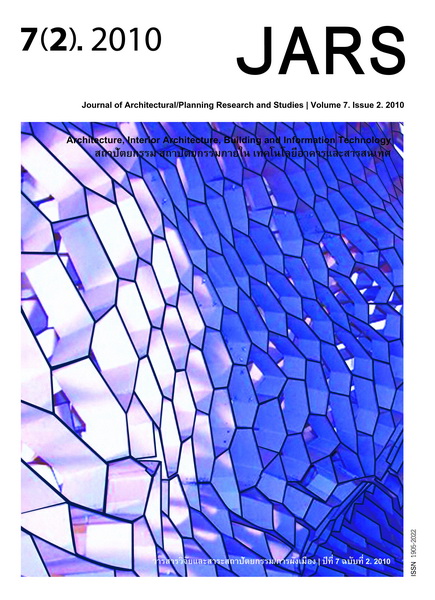Design for Experience: From Design to Business Strategy
Main Article Content
Abstract
Due to higher productivity and innovations, design outcomes have become more and more similar in their technology, functionality, price and quality. The change towards a more human-centered design has gained popularity among many businesses. The concept is to create stronger emotional connections with customers which currently become dominant in consumer arenas. By evoking valued meanings through their products, services, and multidimensional customer experiences, companies are then able to create more value and achieve strategic advantages over their competitors. In any given case, the design is asked to influence, not just the look and feel of things, but also the quality of user experience that people have through the power of design in creating a tangible expression. As designers, we are now challenged to help companies explore and visualize directions for their future offering.
This article aims to review the many definitions of experience, understanding the process of experiencing, and analyzing the role and optimizing development of experience design in marketing and business perspectives.
Downloads
Article Details

This work is licensed under a Creative Commons Attribution-NonCommercial-NoDerivatives 4.0 International License.
All material is licensed under the terms of the Creative Commons Attribution 4.0 International (CC-BY-NC-ND 4.0) License, unless otherwise stated. As such, authors are free to share, copy, and redistribute the material in any medium or format. The authors must give appropriate credit, provide a link to the license, and indicate if changes were made. The authors may do so in any reasonable manner, but not in any way that suggests the licensor endorses you or your use. The authors may not use the material for commercial purposes. If the authors remix, transform, or build upon the material, they may not distribute the modified material, unless permission is obtained from JARS. Final, accepted versions of the paper may be posted on third party repositories, provided appropriate acknowledgement to the original source is clearly noted.
References
Berry, L. L., Carbone, L. P., & Haeckel, S. H. (2002). Managing the total customer experience. MIT Sloan Management Review, 43(3).
Carbone, L. P., & Haeckel, S. H. (1994). Engineering customer experiences. Marketing Management. 3(3).
Cziksentmihalyi, M. (1990). Flow – The Psychology of optimal experience. New York: Happer and Row.
Desmet, P. M. A., Overbeeke, C. J., & Tax, S. J. E. T. (2001). Designing products with added emotional value: development and application of an approach for research through design. The Design Journal, 4(1), 32-47.
Dewey, J. (1934). Art as experience. New York: Perigee.
Dewey, J. (1960). On experience, nature, and freedom. New York: The Liberal Arts Press.
Diller, S., Shedroff, N., & Rhea, D. (2006). Making meaning: How successful businesses deliver meaningful experiences. CA: New Riders.
Ehn, P., & Lowgren, J. (1997). Design for quality-in-use: Human-computer interaction meets information systems development. In M. G. Helander, T. K. Landauer & V. P. Prabhu (Eds.), Handbook of humancomputer interaction (2nd ed.) (pp. 299-313). Amsterdam: Elsevier Science B.V.
Jordan, P. W. (1997). Products as personalities. In S. A. Robertson (Ed.), Contemporary Ergonomics. London: Taylor & Francis.
Kotler, P. (1999). Marketing Management: Millennium Edition (10th ed.). N.J.: Prentice Hall.
López, E. (2009). Understanding the potential of providing in-store Unique Customer Experiences (UCEs). Rotterdam: Erasmus University Rotterdam.
Maslow, A. H. (1970). Motivation and personality (2nd ed.). New York: Harper & Row Publishers.
McLellan, H. (2000). Experience design. Cyberpsychology & Behavior, 3(1), 59-69.
Norman, D. A. (1988). The design of everyday things. New York: Double Day Dell.
Norman, D. A. (2002). Emotion & Attractive. Interactions, July - August.
Norman, D. A. (2004). Emotional design: Why we love (or hate) everyday things. New York: Basic Books.
Pine II, B. J., & Gilmore, H. J. (1998). Welcome to the experience economy. Harvard Business Review, JulyAugust, 97-105.
Pine II, B. J., & Gilmore, H. J. (1999). The experience economy. MA: Harvard Business School Press.
Pullman, M. E., & Gross, M. A. (2004). Ability of experience design elements to elicit emotions and loyalty behaviors. Dicision Sciences, 35(3).
Shaw, C. (2007). The DNA of customer experience: How emotions drive value. New York: Palgrave Macmillan.
Shedroff, N. (2001). Experience design 1. Indiana: New Riders.


